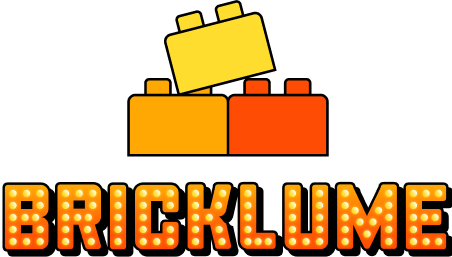
LEGO Plural: LEGO or LEGOs, What Is the Plural of LEGO?
Share
1️⃣ Introduction: The LEGO Plural Debate
Have you ever heard someone say "I just bought some LEGOs" and wondered if that was correct? The LEGO plural debate has been ongoing for decades, with LEGO fans divided between saying "LEGO" or "LEGOs".
But what is the correct plural of LEGO, and why do people disagree? In this article, we’ll break down:
✔️ The official LEGO stance on its plural form.
✔️ The grammar rules behind the debate.
✔️ Why some people say LEGOs while others insist on LEGO.
✔️ How different countries use LEGO plural.
Read about How LEGO Bricks Are Made.
2️⃣ What Is the Correct Plural of LEGO?
According to The LEGO Group, the correct plural form of LEGO is just LEGO, not LEGOs.
Why?
✅ LEGO is a brand name, not a generic noun.
✅ The LEGO Group treats LEGO as an adjective, not a plural noun.
✅ LEGO’s official terminology uses phrases like "LEGO bricks" or "LEGO sets" instead of "LEGOs".
So, if you want to follow LEGO’s official stance, you should say:
✔️ "I bought five LEGO sets."
❌ "I bought five LEGOs."
3️⃣ Why Do Some People Say "LEGOs"?
Despite LEGO’s official stance, many English speakers naturally add an "s" to pluralize words.
🔹 Pluralization in English:
- Toy → Toys
- Block → Blocks
- Car → Cars
Since LEGO refers to toy bricks, people apply the same rule and say "LEGOs".
🔹 American English Influence:
- In American English, it’s common to pluralize brand names (e.g., "Kleenexes," "iPads").
- Many Americans grew up calling LEGO bricks "LEGOs", reinforcing the habit.
4️⃣ What Does the LEGO Group Say?
The LEGO Group is very clear about its brand usage:
✅ LEGO is always singular and uncountable.
✅ The correct way to refer to multiple LEGO pieces is "LEGO bricks" or "LEGO sets".
✅ Saying "LEGOs" is incorrect according to LEGO’s branding.
LEGO's Official Statement
"The word LEGO is a brand name and should always be used as an adjective, as in LEGO bricks or LEGO sets."
5️⃣ LEGO Plural & Grammar: What’s the Rule?
Some grammar rules support LEGO’s stance:
✔️ Uncountable Nouns:
- Words like furniture, water, and LEGO do not require an "s" to be plural.
- You wouldn’t say "furnitures" or "waters", so LEGO follows the same pattern.
✔️ Mass Nouns:
- LEGO functions as a mass noun, similar to "sand" or "rice."
- You don’t say "rices", so technically, "LEGOs" isn’t needed.
6️⃣ Regional Differences: LEGO vs. LEGOs Around the World
The LEGO plural debate also varies by country:
🌍 United Kingdom & Europe:
- "LEGO" is widely used as an uncountable noun.
- Most people say "LEGO bricks" instead of "LEGOs."
🇺🇸 United States:
- Many Americans say "LEGOs" because it follows pluralization rules.
- Even LEGO fans in the US still commonly use "LEGOs."
🇦🇺 Australia & Canada:
- Generally follow UK English rules, but "LEGOs" is still used informally.
7️⃣ Common Misconceptions About LEGO Plural
🚫 "LEGOs" is the official term.
✅ False – LEGO has confirmed the correct term is LEGO bricks.
🚫 Saying "LEGOs" is grammatically incorrect.
✅ False – While not LEGO’s official term, "LEGOs" follows English pluralization rules.
🚫 Nobody says "LEGOs" outside the US.
✅ False – While more common in the US, some regions still use LEGOs informally.
8️⃣ Final Verdict: Should You Say LEGO or LEGOs?
So, what’s the right way to say it?
✔️ If following LEGO’s official rules → Use "LEGO bricks" or "LEGO sets".
✔️ If speaking informally in the US → Saying "LEGOs" is widely accepted.
✔️ If in doubt? Just say "LEGO pieces" or "LEGO sets" to keep everyone happy!
📌 Internal Link: Check out Bricklume’s LEGO Light Kit Collection.
9️⃣ Conclusion: What This Means for LEGO Fans
- The LEGO plural debate continues, but both LEGO and LEGOs are understood worldwide.
- LEGO insists on "LEGO bricks", but regional differences keep "LEGOs" in use.
- No matter what you say, the most important thing is to keep building and having fun!
🔥 Want to enhance your LEGO sets? Shop LEGO Light Kits Now!


